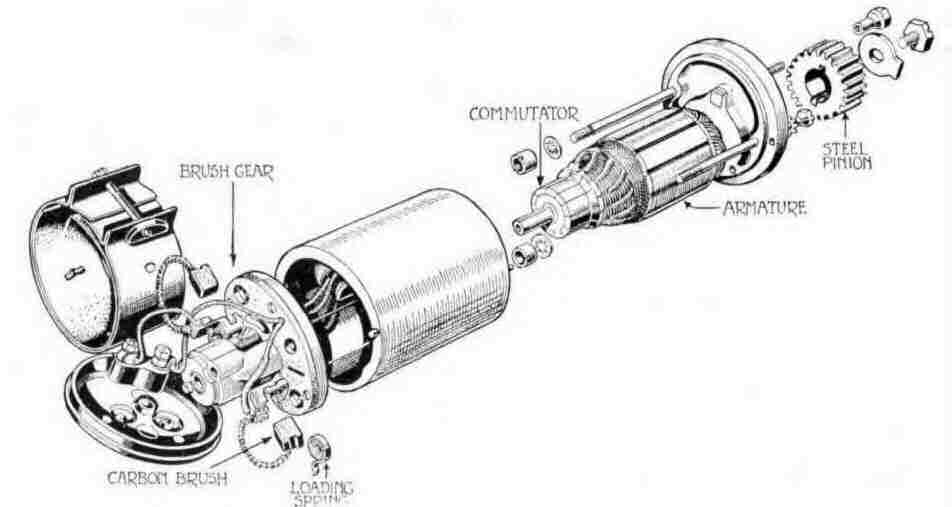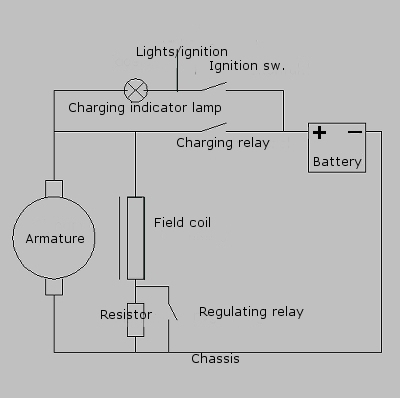|
What is a dynamo? ”A
dynamo is a machine that transforms moving energy to electrical
energy.”
By varying the magnetic field it is possible to regulate the output. |
|||
|
|
Simple dynamos (bicycle) use a permanent magnet, here it is not possible to control the output |
|
|
|
Larger dynamos use an electro magnet (with a field coil), with which it is possible to control the output voltage.
|
|||
|
|
|||
|
To get charging started, it is required that the field is slightly magnetic (the remanence). the bit of power thus generated, is diverted to the field coil, which makes it more magnetic, the dynamo then generates more power, the magnetic field becomes more powerful etc.
The control box/regulatorA resistor is mounted In series with the field coil. In the start up phase, this is shorted by a relay switch. When the desired voltage is achieved, the switch opens and less power is sent to the field coil. This switching goes on several times per second Over time, this switch gets dirty ond worn, and the load becomes less effective. Another relay switch connects the dynamo to the battery, when the dynamo voltage get high enough, since otherwise, the battery will be drained. In the electronic control box, this switch is replaced by a large diode (rectifier), which prevents the current flowing backward, and allows charging to begin earlier. The regulating switch and the resistor is replaced by a large transistor, no dirty contacts.
|
|||
|
Principle drawing of an type A charging system, with mechanical control box
|
When the ignition switch is connected, the charging indicator lamp lit because it get power from the battery, and sees ground through the dynamo. When the armature begins to rotate, and produce power, the light in the charging indicator lamp will go out because it get the same voltage on both sides. The current through the lamp helps to magnetize the field coil in the start. The regulating relay is so far closed, allowing as much power as possible to get to the field coil. At approx 7 / 14 volt the charging relay will close and make connection to the battery, charging begins, At approx 7,8 / 14,7 volt, the the regulating relay will open and the current will flow through the resistor, reducing the power to the field coil (making it less magnetic). |
||



